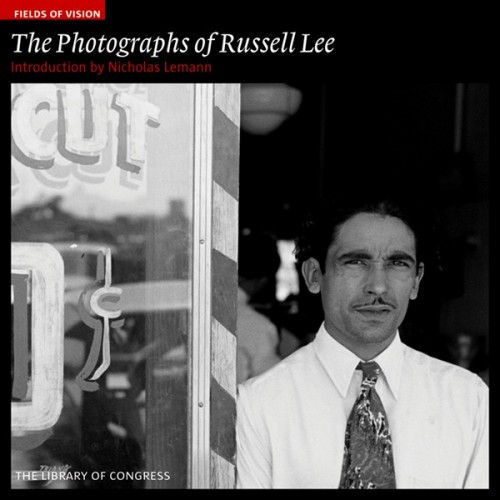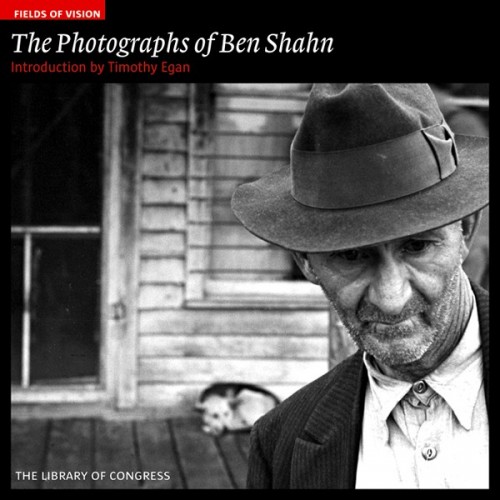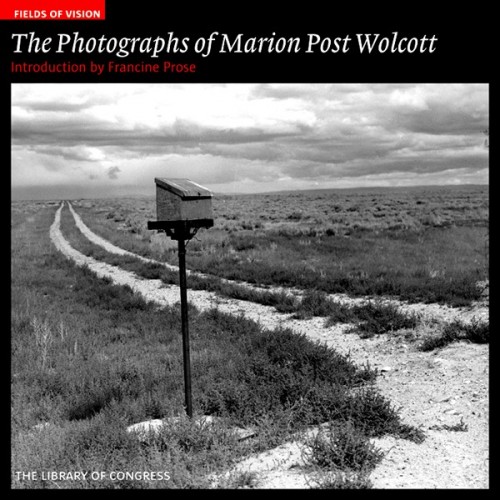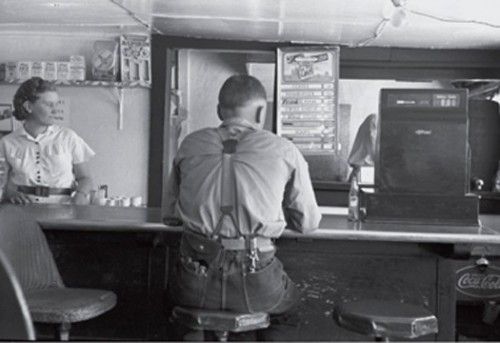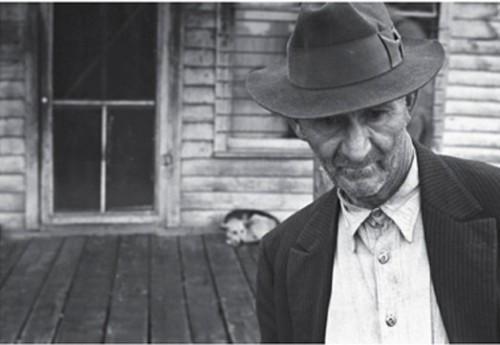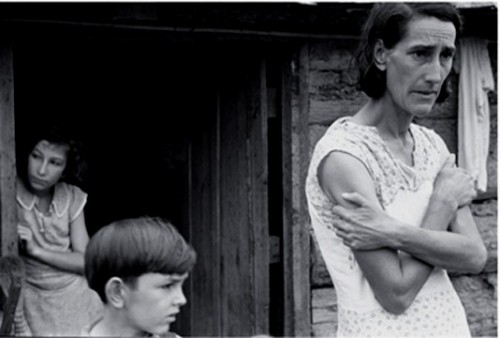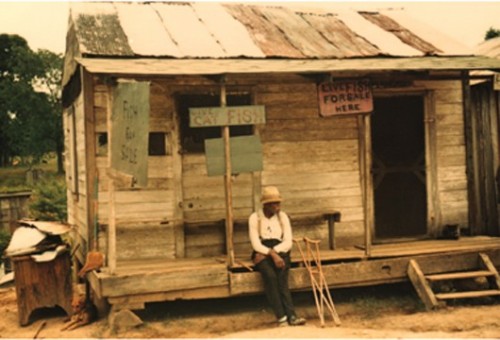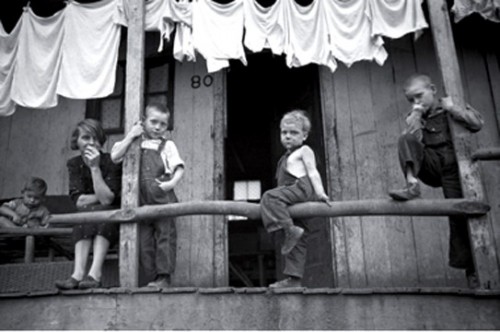Photographs by Russell Lee, Ben Shahn, and Marion Post Wolcott
Farm Security Administration Documented the Great Depression
By: Charles Giuliano - Oct 23, 2008
Fields of Vision
Published by the Library of Congress
Giles/ Acc Distribution
64 pages, 50 photographs, $12.95 each
The Photographs of Russell Lee
Introduction by Nicholas Lemann
The Photographs of Ben Shahn
Introduction by Timothy Egan
The Photographs of Marion Post Wolcott
Introduction by Francine Prose
When the series of small photographic books drawing on an archive of some 171, 000 black and white and some 1,600 color images owned by the Library of Congress was first slated for their recent publication, arguably, nobody realized how timely and relevant they would become.
It is uncanny that today when there is almost daily bad news for the American economy more and more average folks wonder whether we are again entering into an era of Global Depression such as the Hard Times of the 1930s. For a generation that has known nothing but privilege and prosperity it is sobering to encounter the riveting and poignant images in these three volumes.
With so many out of work it was a mandate of the Federal Government to provide jobs. It is ironic that under this circumstance artists, musicians, writers and performers were counted among the unemployed in the overall labor force. While it is the norm, in the best of times, that only a handful of individuals find adequate financial support from their craft and professions, during the Great Depression even the creative community was put to work. Through general relief programs as well as specific incentives of the Works Progress Administration (WPA) artists and creators were able to get small but regular checks.
For the fine arts the WPA is best remembered for its Easel Project and Mural Project. This resulted in thousands of murals in public buildings, schools, libraries, court houses, Federal buildings, many of which still survive. The Easel Program resulted in warehouses full of of paintings, sculptures and graphic arts. When the WPA ended this material was made accessible to museums. The iconic "American Gothic" by Grant Wood came to be owned by the Art Institute of Chicago for the cost to the taxpayers of a monthly relief check. Similarly important works by Jackson Pollock and Jack Levine entered the collections of the Smithsonian Museums and the Metropolitan Museum of Art. The "surplus," after being cherry picked by major museums which showed any interest, was sold by the pound as "scrap." In New York City paintings from the WPA were removed from their stretchers and used to wrap pipes in public buildings.
In that sense the work produced by photographers commissioned by the short lived Farm Security Administration which existed from 1935-1944, headed by Roy Stryker, fared better. A number of photographers- Charlotte Brooks, Esther Bubley, Marjory Collins, Harold Corsini, Jack Delano, Sheldon Dick, Arnold Eagle, Walker Evans, Theodor Jung, Dorothea Lang, Russell Lee, Sol Libsohn, Carl Mydans, Gordon Parks, Martha McMillan Roberts, Edwin Rosskam, Louise Rosskam, Arthur Rothstein, Richard Saunders, Ben Shahn, John Vachon, Todd Webb, and Marion Post Wolcott- were provided with equipment and materials. For small stipends they were dispatched into the field.
Although this program resulted in some of the most iconic and riveting images of the period, and launched or sustained the careers of some of the most important photographers of their generation, making art, or aesthetics in general were not the primary intention. Rather, the point of the program was to create the kind of agit prop material that would make personal and vivid the plight of the American farmer. This material was made available to the media and magazines and used in creating reports to Congress. The intention was to put a face on this time of strife and suffering.
The photographers were dispatched with general thematic subjects to record such as "church" "court day" and barns." Dorothea Lang, for example, was assigned to record "cooking, sleeping, praying and socializing." While some 250,000 images were created the surviving 164,000 developed negatives have been scanned and put on line by the Library of Congress. Initially about 77,000 photographic prints were provided to the press as well as 644 images from color negatives. There were also two films commissioned by this program "The Plow That Broke the Plains" by Pare Lorentz and "The River."
All of this material is accessible and individual prints may still be ordered from the Library of Congress. It is also a vast resource for researchers and archivists. The North Adams based artist and archivist, Rich Remsberg, recently won an Emmy for a documentary film project and is publishing a book based on images of musicians he has researched and organized.
Given the great depth of this archival material we are grateful for these small and useful books which provide a brief introduction and sampler inviting further inquiry. It is a good place to start and should be required reading in schools, particularly now. The subject matter and theme of the books creates some challenge in finding the individual character and personality of the three selected photographers- Russell Lee, Ben Shahn and Marion Post Wolcott. Shahn is best known as a painter and illustrator whose archive and papers are owned by the Fogg Art Museum of Harvard University. Here he more than holds his own in the medium and one can sense an eye that informed and interacted with his easel work. For that reason his volume is particularly insightful. The most engaging aspect of Lee's book is the generous use of color. What is fascinating about Wolcott's book is its treatment of dwellings including a rare view of the Dymaxion homes of Buckminster Fuller. It was a great idea for affordable housing that never really took off.
The Great Depression phased out, ironically, when America went back to full production during World War II. There was no longer a need to trump up jobs. It makes one wonder just what will pull us out of the ditch this time. Ironically, these three volumes create up to the minute reading, looking, and food for thought.

